Monster Hunter Generations Ultimate (Nintendo Switch) Review
By Josh Di Falco  21.01.2019
21.01.2019
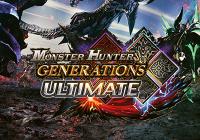
After Capcom's Monster Hunter: World had a rousing 2018 by being the company's best-selling game to date, audiences were finally able to get their hands on the Switch port of Monster Hunter Generations, with the Ultimate version. Whether this is the first foray into Monster Hunter or the tenth, this latest version brings a graphical upgrade to the portable and home console hybrid from Nintendo, and is as good a title as any.
Monster Hunter Generations Ultimate does not redefine the genre, but instead opts to keep things as simple as possible for aged old fans out there, while also being highly familiar for those newcomers who experienced Monster Hunter: World as their first leap into this series. Blessed with an opening cut-scene that showcases the types of battles to expect, this wastes no time getting right into the grittiness of combat. The main thing to keep in mind with this iteration is that the mechanics and formula is based on the classic style of Monster Hunter. While this is great news for series veterans seeking a greater challenge, it is important to note this for newcomers who are coming across from the more recent Monster Hunter: World. World was aimed at a greater audience and treaded the line between being accessible for newcomers, while also providing a challenge for series fans.
Monster Hunter Generations Ultimate does not have a story in the more traditional sense; but rather it features a variety of characters across the four towns who request missions. This is fine, as the Monster Hunter formula is simply slaying and bringing down titanic beasts and monsters. The addictive gameplay loop is in full-force here. Beginning as a lowly hunter with access to the basic weapons, slaying that first monster grants an opportunity to forge stronger weapons or better armour from the slain monster's looted materials. Then, the hunter can use the armour or weapons to move on to fighting an even stronger beast. This is the entire progression of the experience; there are no levels, but rather attack and defence are tied to the weapon and armour options, while they can also be upgraded by using their required materials found in the world. Talismans provide special buffs and some armours have slots for additional buffs or defensive abilities, and these can be freely customised between battles.
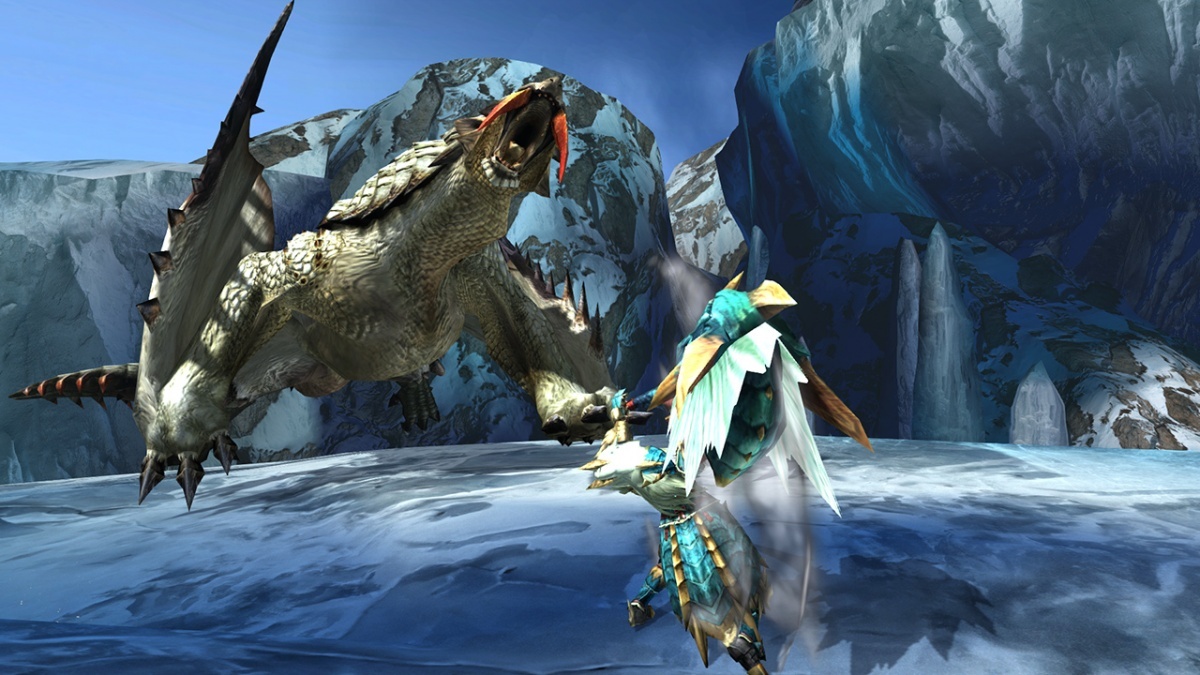
The aim is to not stand still and get complacent with a specific build. There is a huge assortment of monsters, both large and small, and they each require a different strategy of attack to defeat them. Constantly switching weapons and armour sets to suit the next monster on the hunt list is mandatory to garnering success in this world, while staying still on a single build will quickly spell trouble. Because of this, Monster Hunter Generations Ultimate does offer the basic weapon of each weapon class available from the get-go. There are fourteen weapon types in total, from swords and shields to great swords, lances, hammers, guns and the old-fashioned bow and arrows. However, learning how best to use each of these is something worth practicing, and mastering many of their required fighting styles is paramount to toppling foe after foe, in a bid to becoming the great Monster Hunter out there.
There is nothing new here in terms of how the weapons are controlled; they are like prior games in terms of what to expect when wielding them. Probably the only real knock with the weapon mechanics is that it does seem a bit archaic in some battles; the older style method of combat does begin to show here, with a lack of real flexibility between seamlessly switching between attacks. Maybe having this stop-and-start style of play is part of the charm that long-standing fans have come to appreciate, but it does make it a hard sell to those who are used to the more flexible styles of gameplay seen in Monster Hunter: World. Unfortunately, the projectile-based weapons are the losers here; apart from range, there does not seem to be a real benefit to them, as they are severely underpowered in the early stages, and the Hunter can't run and shoot.
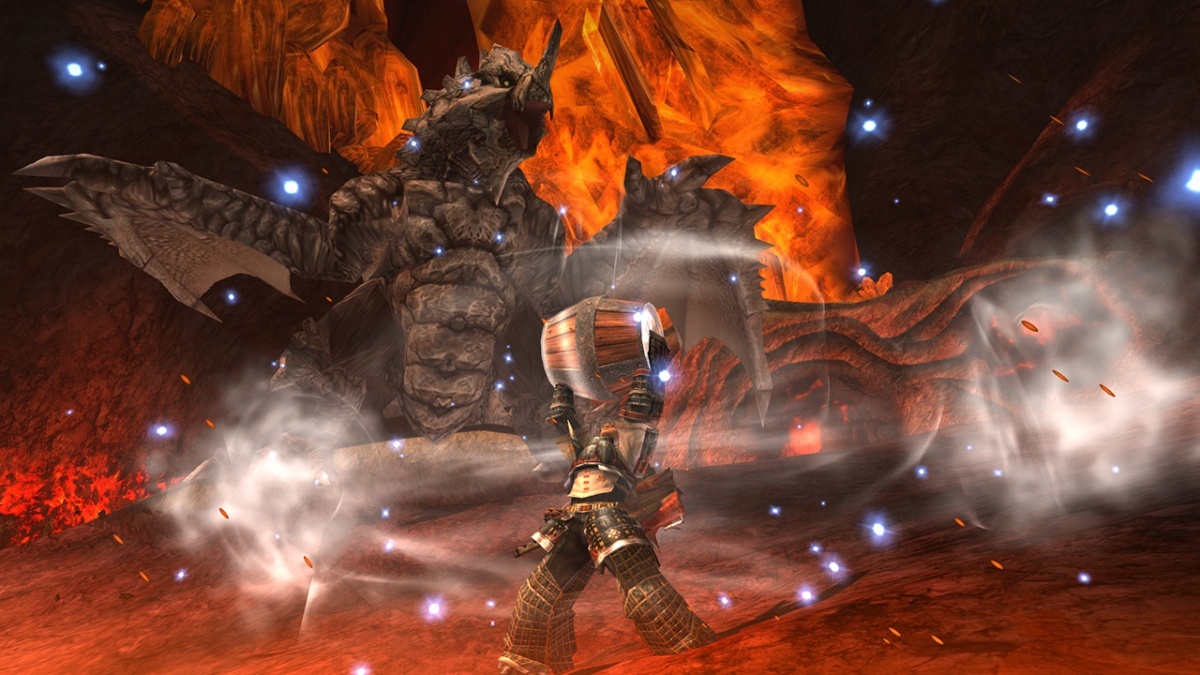
If there is a certain trait that is required in order to get the most enjoyment out of Monster Hunter Generations Ultimate, it is patience. In the early stages of the game, monsters will not go down easily, and arguably even as progression is made further into the experience, the monster battles tend to drag out for nearly forty minutes. Some battles can even stretch out to the mission-restricted fifty minutes; of course, if monster battles constantly exceed the allotted time limit, then there is probably some monster grinding that needs doing in order to get stronger. Grinding is also required, and it ties into patience. Don't expect to just defeat monsters and quickly progress through the key missions. These monsters quickly spike in difficulty; and it can be downright unfair at times. But grinding on previously defeated monsters in order to complete a full set of that monster's armour set is truly rewarding; even if the fruits of labour take a while to show.
Besides, it is worth getting used to fighting these monsters multiple times; no sooner will a really tough monster be defeated, and there is another mission lined up to take it on again. Of course, the second time around with better gear hopefully. It is this repetition that may get tiring after a while; and the slow realisation that even though the monsters require differing strategies; ultimately the battles play out the same: dodge, don't get hit, strike back. There are also a range of different character classes, though like the weapons, they can freely be switched between missions. The aim isn't to choose one and stick to it; but rather to explore them all and utilise them in varying battles to exploit the monster's weaknesses while boosting the hunter's strengths. The 'Striker' class is a great all-rounder for beginners to learn the ropes of combat, but 'Aerial' is mighty useful for taking flight and easily mounting enemies in order to bring them down. 'Guild', 'Adept', 'Valor' and 'Alchemy' round out the options, and it is best to play as them all and learn what works in which instances to truly make the most of each of the classes.
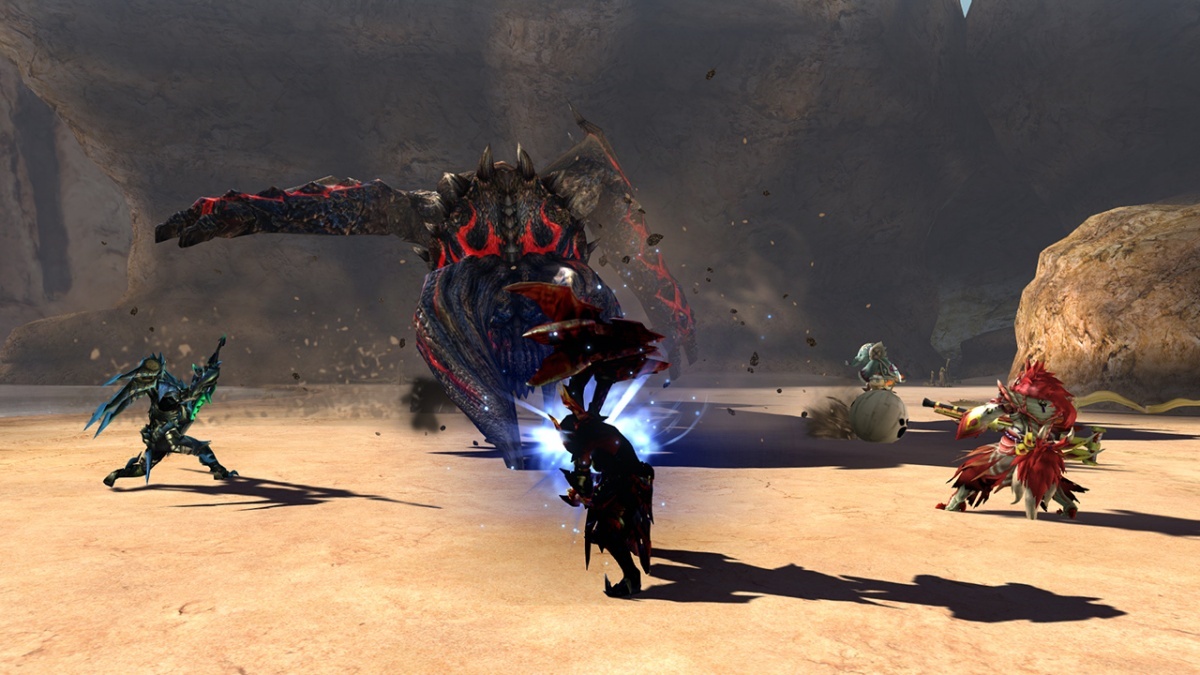
Upon choosing classes, there are also 'Hunter Arts,' which are special moves that the Hunter can employ in battle when their 'Hunter Arts' meter is filled. How the meter is filled differs depending on the chosen class - 'Valor' increases the gauge when the weapon is sheathed, for instance. To be fair, however, pulling off these 'Hunter Arts' is not easy; some require specific circumstances, such as the counterattack moves that unleash devastating blows. In any case, missing these attacks early on is commonplace, but that just stokes the fire for learning when exactly to unleash the moves. The 'Hunter Arts' are not all attack however; some of the abilities are defensive techniques as well. Further, some of the character classes can allow multiple 'Hunter Arts' to be active; the Aerial class, however, only allows for one 'Hunter Arts' to be equipped, whereas Striker can go in with three different abilities equipped.
Missions range from slaying a set number of little monsters, to hunting the behemoths themselves, to gathering a bunch of herbs, and they all carry the usual 50 minute time limit. Of course, making these missions a tad easier and more fun are the ever-friendly and loyal cat-like Felynes. Up to two Palicoes can join the Hunter on their monster-slaying missions, and in addition to their attacks and special abilities, they also make quite the handy gatherers. In addition to collecting what the Hunter can fit in the item inventory, the two Palicoes can also collect quite a bit of items; great source for item-gathering. Palicoes can be hired and the party can be switched between every mission. The Felynes who weren't chosen as being in the hunting party of two can either be assigned to train in order to level up their stats, sleep to regain their motivation levels or they can be deployed on their own item-gathering mission in a group of four. This does keep the order of Palicoes very busy and gives them something to do when they are not in direct use.
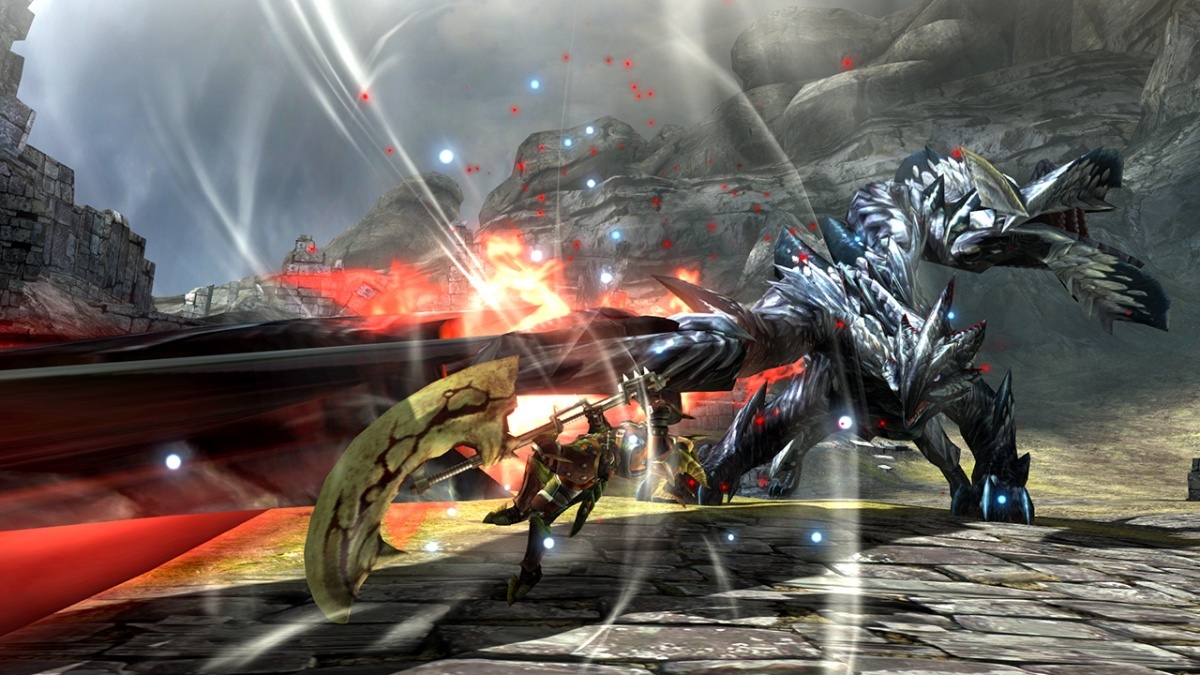
Like Hunters, Palicoes come in a variety of forms with differing abilities that can also be taught to others. Taking it one step further, Palicoes can also have their weapons and armour forged through left-over materials used by the Hunter when making their own gear. This adds a further layer over the micro-managing portions of the game; and it is quite fun to deck out the Palicoes in their own unique gear. However, there is more to all of this than just having strong companion Palicoes for missions. For the first time in a Monster Hunter title, well at least since Generations originally released on Nintendo's 3DS handheld, Palicoes can be directly controlled in their own missions. This makes the personal connection with the Palicoes even greater because now they are far from just being cosmetic companions and it gives the whole training portion a better element of care. Don't let them slack off or forget to train them up; there might be a time when you need them at a stronger level; without needing to grind on previously completed missions.
While there are four towns to gain missions from, they are simply just re-skinned hubs that act the same way; but it is the 'arenas' that provide for some jaw-dropping moments of awe. The vistas and locales look beautiful on the Switch; but don't expect it to be a huge graphical leap over World. In fact, the biggest gripe in the graphics department is that there are heaps of clipping issues. Slain monsters will 'sink' through the ground or 'cut' through the environmental terrains, which can be distracting from the presentation; however, the monsters are generally so hard to kill that by that time, the Hunter is probably gladder that it's over more so than the 'clipping' animations. During hunts, the gameplay itself can be janky at times due to the previously mentioned lack of flexibility between switching animations. Unless the Hunter initiates a specific button-combo, switching between mid- and high-attacks consist of an awkward second or two of a pause. For the sake of realism, let's call it 'recovery time'. Further hindering matters is that if a long sword-slashing animation is initiated, there is no way to cancel the action should the moment require a split-second dodge. Instead, the Hunter will just obliviously complete their manoeuvre, leaving them wide open for an attack by the monster that seems more capable in switching their attacks than the Hunter.

The camera also can be an enemy during battles; whether it's because of how zoomed-in it is, but fighting a larger enemy can be more difficult due to losing the Hunter in the midst of the monster's graphics. Referring back to the clipping issues from before, it is not uncommon for the Hunter to end up beneath a monster, only for the poor camera to get stuck 'inside' the monster instead of pulling back a bit to allow for the Hunter to gain some bearings in the fight. Even worse is the need to stop moving and sheathe the weapon just to drink a potion to restore health mid-battle. The system has not aged amazingly - especially for those who have arrived from playing World. Sure, some may call these mechanics a 'nostalgic' trip to the games of yesteryear with their archaic control - and Ultimate still feels like an older game in need of some third-person open-world adjustments. On the other hand, this plays like a charm, and the monster battles are as epic as ever. It is filled with plenty of blood, sweat and tears, especially those tears of joy when the monster finally goes down.
Unfortunately, Ultimate is a victim of the standards left behind by its predecessor in terms of menu control as well. While World while also menu-based with doing anything, they were at least streamlined to be more accessible and easier to understand. The workflow in Ultimate does leave a bit to be desired - especially when the Hunter starts collecting a larger assortment of gear, and they are all lumped into the one inventory screen with all of the weapons as well. Even the item box thinks lumping everything together is a great idea. This would have been a great opportunity to allow 'custom' inventory screens, where Hunters could have split the items however, to allow for an easier time navigating through the items. Speaking of navigating - Ultimate also does a wonky job of actually teaching the would-be Hunters the mechanics of the game; instead the handy information is contained within the hard-to-find manuals. It does take a bit of navigating to finally discover everything there is to know, but they are otherwise as informative as they come in terms of in-game manuals. Each weapon type has their own move set of sorts, and monster stats are also kept as a useful tool to refer back to.
Of course, the monsters don't need to be brought down in Solo mode alone. Jump online with some local Hunters to venture on tougher assignments and combine differing abilities and character-builds to slay some monsters. Going online is a lot of fun for those who prefer the more social aspect of monster-hunting; but the solo mode is available for those who prefer the life of solitude at their own pace. Playing with friends is a fun task especially as the difficulty spikes up quite drastically and quickly.
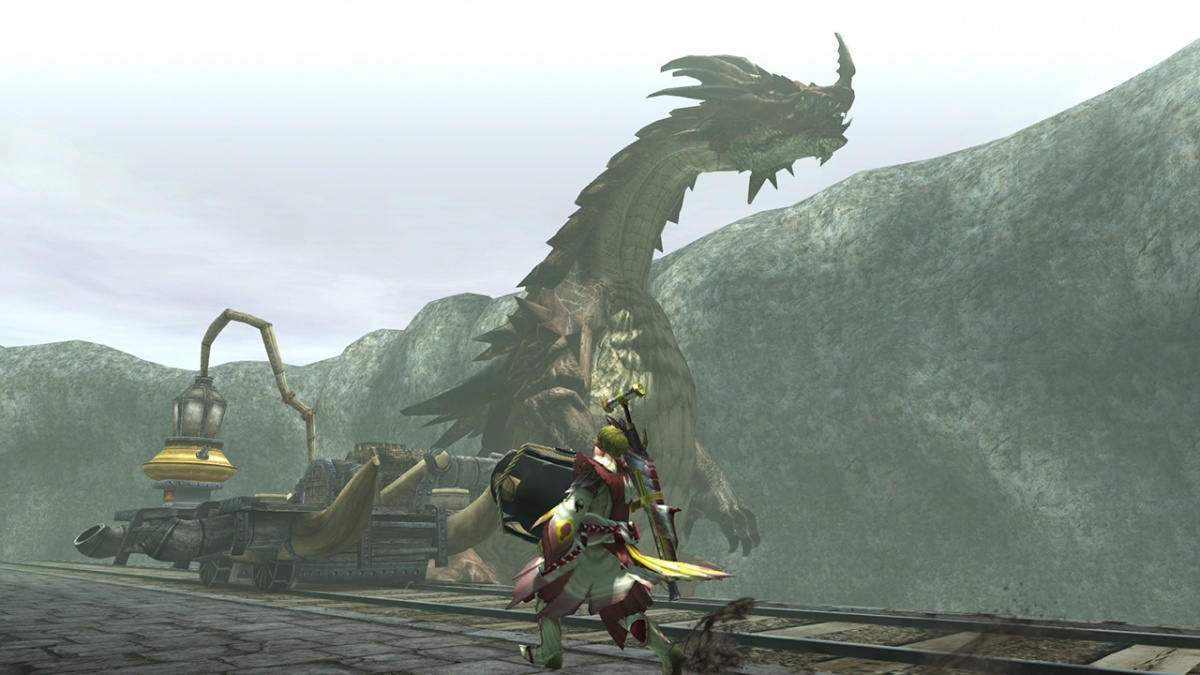
Cubed3 Rating
Great - Silver Award

Monster Hunter Generations Ultimate is an acquired taste that long-standing fans of the franchise will happily drink from. The formula for killing monsters and turning them into better gear to take on the bigger monsters is an addictive loop that is only broken up by the mindless and annoying 'egg delivery' quests, and occasional battle control limitations. Whether playing online with a group of friends or in Solo mode, this is a menu-heavy experience that may easily scare away series newcomers who are used to Monster Hunter: World. While Ultimate is not a streamlined experience, beneath the thick and scary exterior is an extremely deep system-based epic adventure.

![]() 8/10
8/10
![]() 0
(0 Votes)
0
(0 Votes)
 Out now
Out now  Out now
Out now  Out now
Out now  Out now
Out now Comments
Comments are currently disabled

 Sign In
Sign In Game Details
Game Details Subscribe to this topic
Subscribe to this topic Features
Features





 Top
Top

